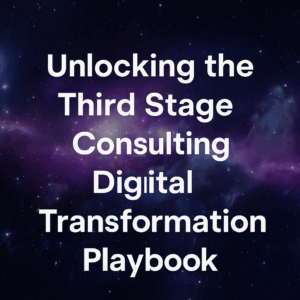Picture this: you’re on a digital transformation journey, a bit like embarking on a grand adventure to scale the dizzying heights of Mount Efficiency. You’ve got your backpack filled with all the latest tech gadgets and a map in hand, charting the course to the peak of Productivity Paradise. But, whoops! Somewhere along the way, you realize you’ve been following the map upside down. Uh-oh, time for a “redo”!
This “redo” phase is like accidentally taking a detour on your hike and ending up at the base of the wrong mountain. Suddenly, you’re facing the daunting task of retracing your steps, all while watching your supplies (re: budget) dwindle. It’s like being in one of those video games where you lose a life and have to start the level all over again, except in this game, the ‘lives’ are your dollars, and boy, do they fly away quickly during a do-over!

Table of Contents
ToggleWhy is Project Restoration so Pricey?
Imagine you’ve baked a cake (your project), but you used salt instead of sugar. You can’t just pick out the salt, right? You have to start from scratch – new ingredients, more time, and let’s not forget the energy (both electrical and emotional!).
In project terms, this means revisiting planning stages, redoing completed work, and engaging teams for longer, which, unlike a magical pot of gold at the end of the rainbow, doesn’t come for free.
The trick here is to try and get it right the first time. Easier said than done, of course! It’s like being on a game show and having to choose between three doors, knowing that behind one of them is a brand new car (a successful project) and behind the others are goats (the costly project restoration phase).
But hey, even if you do end up opening the goat door (everyone loves goats, right?), remember, every detour is a chance to enjoy new scenery. And who knows, on this scenic re-route, you might stumble upon a hidden treasure of newfound insights and experience that make your project even better in the long run!
Needing project restoration support is nothing to be ashamed of; it’s a common occurrence in the complex world of digital transformations. However, it’s important to acknowledge that this phase often represents the most significant expense in such initiatives. Before we delve into strategies for effective recovery, let’s first explore the common reasons why projects find themselves in need of this critical intervention.
Understanding these underlying themes is not just about pinpointing what went wrong; it’s about gaining the insights needed to navigate future projects more successfully. From misaligned expectations to technological mismatches, each recovery story offers valuable lessons for steering clear of similar pitfalls in the future. So, let’s embark on this enlightening journey into the heart of project restoration.
The Conflicting Agendas
In the world of software implementations, different players in the game have their own unique agendas – think of it as a techy version of a dinner party, where everyone has their favorite dish they’re trying to get on the menu! This is important to understand when discussing project restoration.

Software Vendors: The Fast-Track Chefs
Imagine software vendors as enthusiastic chefs at a fancy restaurant. They’ve got this signature dish – their software – and they’re super eager for you to try it. They’ll often encourage you to eat it how they think it tastes best, swiftly and without too much fussing around with customizations. Why? Well, they believe their recipe is top-notch as it is. Plus, the quicker you eat, the sooner they can serve the next table. In software terms, they want you to implement their solution quickly and in the way they’ve designed it to work best (or makes them the most money). It’s like, “Here’s our special dish, trust us, it’s delicious – no need to add extra seasoning!”
System Integrators: The Event Planners Who Dash Post-Celebration
Now, think of system integrators as event planners. They’re the ones who help you set up for the big party – your project’s “go-live.” They’re all about ensuring the event (implementation) goes off without a hitch, but once the last guest leaves (the project goes live), they’re often out the door, off to plan the next bash. Their focus is on effectively getting you to that go-live milestone, but they might not stick around for the long-term relationship. It’s like, “Enjoy the party, hope everything was great, call us for your next big event!”

The Ideal Scenario: A Tailored Tech Feast
Now, what’s often needed is a blend of both the software vendor‘s expertise in their product and the system integrator‘s skill in implementation. Imagine if the chef (software vendor) collaborated with the event planner (system integrator) to tailor the menu to your exact preferences, making sure the food is not only great but also suits the theme and vibe of your party.
The Reality: Navigating Different Agendas
In the real world, this means being aware of these differing agendas. You’d need to ensure that the software vendor understands your specific needs (you don’t want a seafood platter if you’re allergic to shrimp, right?) and that the system integrator aligns their go-live plan with your long-term operational goals (like making sure there’s enough dessert for latecomers!).
The Key: Effective Communication and Alignment
The secret sauce here? Effective communication and alignment of these agendas with your organization’s goals. It’s like being the host who ensures the chef’s dishes and the event planner’s setup work together to create an unforgettable party that everyone talks about for all the right reasons! Third Stage often facilitates this role.
So, while navigating the different agendas of software vendors and system integrators can be a bit like orchestrating a complex dinner party, with the right approach, you can ensure that the end result is a successful, satisfying implementation that meets your specific needs.

What Can Go Wrong?
Ensuring your project remains on course is a substantial task, akin to navigating a complex maze. With myriad factors at play, it’s all too easy to find yourself entangled in a web of conflicting agendas and confusing directives. Navigating this labyrinth requires vigilance and strategic foresight to stay aligned with your project’s true north.
So, what are some red flags that you may need some project restoration support?
The “What Have I Gotten Myself Into?” Moment
First up, there’s the classic stress cocktail. This isn’t your every day “forgot my password” stress. We’re talking, “Why are there so many buttons on this thing, and what does this one do?” kind of stress. It’s like you’ve been asked to pilot a spaceship when you’ve only ever driven a go-kart.
The Great Confusion Caper
Next, welcome to the land of confusion, where questions like “Why does this software not do what it’s supposed to do?” and “Who on earth is supposed to manage this part?” fly around like confused bees. It’s a bit like assembling a complex LEGO set, but all the pieces are from different sets, and the instructions are in a language you barely understand.
The Cascade of Missteps
Let’s talk about those tiny missteps that can snowball into an avalanche. Maybe you chose software that’s about as compatible with your business processes as cats are with vacuum cleaners. Or perhaps the budget is spiraling out of control like a shopping spree in a candy store.
The Domino Effect of Delays
Delays can stack up faster than dishes in a bachelor’s sink. When one part of the project gets delayed, it’s like knocking over the first domino in a long chain. Suddenly, you’re watching your go-live date whoosh by like a high-speed train while you’re still tying your shoelaces at the station.
The “Uh-Oh” of Overlooked Details
It’s the little things, isn’t it? Overlooking details during pre-implementation or Phase Zero Planning is like forgetting to add yeast to bread dough. You end up with a dense, unrisen loaf that nobody’s thrilled to eat. In project terms, this could mean data migration mishaps or underestimating the training your team needs.

The Tangled Web of Stakeholder Expectations
And let’s not forget about managing stakeholders’ expectations. Without clear communication from the get-go, you might find yourself in a situation where your CEO expected a Tesla, but what you deliver feels more like a horse-drawn carriage.
The Grand Finale: A Performance That Falls Flat
In the grand finale, if these issues aren’t addressed, you could face an underwhelming go-live as a firework that fizzles out. The project might limp across the finish line, but it’s far from the success you envisioned.
Take it from the Expert Witnesses

Taking it from the perspective of an expert witness, especially one from an independent and technology-agnostic consulting firm like ours, is like being the detective who steps into a mystery novel right at the most thrilling part. We’re the ones who get called in when the plot has thickened and the stakes are sky-high. Our job? To untangle the web of a digital transformation gone awry, a task often as intricate as solving a Rubik’s cube while blindfolded.
The Scene of the Tech-Crime
Imagine a digital transformation project as a grand, ambitious ship setting sail. It’s supposed to glide smoothly toward the horizon of progress and efficiency. But instead, it hits an iceberg named “Failure” and is now sinking in the sea of litigation. That’s where we come in, like maritime investigators trying to figure out why the ship couldn’t navigate the treacherous waters of technology implementation.
The Expert Witness Toolkit
As technology-agnostic consultants, our toolbox is unique. We don’t have a horse in the race regarding software vendors or platforms. Our only loyalty is to the truth. This impartiality is like having x-ray vision goggles that see through the sales pitches and tech jargon to the heart of the problem.
- Forensic Analysis: We comb through the project’s history, dissecting every decision and milestone like a forensic scientist goes over a crime scene. We’re looking for clues – a misstep here, a miscommunication there.
- Interviews and Testimonies: We talk to everyone involved, from the beleaguered IT team to the frustrated end-users, piecing together the story from different viewpoints. It’s like conducting interviews in a whodunit, where everyone has a piece of the puzzle.
- Document Review: We dive into the sea of documentation – emails, contracts, project plans. It’s like sifting through a library for that one book that has the answer to a riddle.
- Technical Insight: Our deep understanding of technology and project management acts like a compass guiding us through the storm of technical complexities.
The Plot Twist
The plot twist in these high-profile, high-stakes failures is often not just one single villain. It could be a series of small missteps and miscommunications that snowballed into an avalanche of problems. It’s rarely just about the technology; it’s about people, processes, and expectations not aligning.
The Resolution
Our findings don’t just point fingers; they’re a roadmap to understanding what went wrong and how similar disasters can be avoided in the future. It’s like the final chapter of the mystery novel, where the detective explains how the seemingly unrelated clues come together.
The Ripple Effect
Our work doesn’t just impact the immediate litigation. It can influence how future technology projects are approached, ensuring that lessons are learned and the same mistakes aren’t repeated. It’s like teaching future sailors how to not hit the same iceberg.
So, as expert witnesses in the thick of technology project failures, our role is crucial. We’re not just solving a puzzle for the sake of litigation; we’re helping to write a cautionary tale for the entire industry. Our goal? To turn what was a high-stakes failure into knowledge and strategies that pave the way for future successes. In the world of digital transformations, we’re the keepers of hard-earned wisdom, ensuring that every new journey is a little bit safer and much more informed.
Now that we’ve covered the worst-case scenario, let’s discuss the importance of restoration and recovery work.
What is Restoration and Recovery?
This refers to the process of identifying and addressing the challenges and issues that can arise during complex projects, particularly those involving technology implementations like software upgrades or digital transformations.
This concept is particularly important in contexts where projects are not meeting their objectives, are over budget, are delayed, or encounter significant operational or technical obstacles.
Key Aspects of Project Restoration and Recovery:
- Diagnosis of Issues: This involves a thorough analysis to identify what is causing the project to deviate from its intended path. Issues might include technical challenges, poor project management, inadequate resource allocation, or misalignment between the project’s goals and the organization’s capabilities or needs.
- Strategic Planning: Once the issues are identified, a strategic plan is developed to address these challenges. This plan may include redefining project goals, timelines, reallocating resources, or changing project methodologies.
- Implementation of Corrective Actions: This step involves putting the recovery plan into action. It may require renegotiating contracts, enhancing communication channels, providing additional training, or bringing in external experts for specialized knowledge.
- Monitoring and Adjustment: Continuous monitoring of the project’s progress post-recovery is crucial. This ensures that the project remains on track and allows for adjustments to be made as needed.
- Stakeholder Management: Effective communication with all stakeholders, including project teams, management, and external partners, is vital during the recovery process. Keeping everyone informed and engaged helps in maintaining trust and ensures collaborative problem-solving.
- Learning and Improvement: Post-recovery, it’s important to analyze what went wrong and why, to learn from these experiences. This analysis can provide valuable insights for future projects, helping to avoid similar pitfalls.
- Focus on Long-term Success: Restoration and recovery should not just aim at immediate fixes but should also consider the long-term success and sustainability of the project.
In summary, understanding project restoration and recovery involves a comprehensive approach to rescuing troubled projects, ensuring they deliver the intended value and align with the organization’s overall strategic goals.
Project Restoration Red Flags
Knowing when to call in the cavalry for project restoration support can sometimes feel like trying to decide if you need an umbrella when the sky looks a bit cloudy. You don’t want to overreact, but you also don’t want to get caught in a downpour! Here are some telltale signs that it might be time to reach out for help:
The Project Timeline Has Gone Haywire
If your project timeline starts looking like a doodle from a 2-year-old rather than a straight line, that’s a red flag. Delays are normal, but when your “quick” project starts to feel like it’s competing with a glacier for which moves slower, it’s a sign something’s off.
Budget? What Budget?
When your project budget starts to feel like a bottomless pit, and you’re pouring in resources with no end in sight, it’s a clear SOS signal. Budget overruns can be a symptom of deeper issues like scope creep or mismanaged resources.
The Sound of Silence from Stakeholders
If your stakeholders are quieter than a mime at a library, it could mean they’re either disengaged or in the dark about the project’s progress. Both scenarios are not great. Regular, clear communication is key to project success.
Quality Control is Playing Hide and Seek
When errors and glitches become more frequent visitors than success stories, it’s time to be concerned. Compromising on quality can have a domino effect, impacting everything from user satisfaction to long-term viability.
Team Morale is on a Deserted Island
If your project team’s morale is lower than a limbo stick at a dance party, it’s a serious warning sign. A demotivated team can lead to decreased productivity and increased risk of failure.
The Goals Are as Clear as Mud
When the project goals are as clear as a foggy day in London, and no one seems to remember what they’re working towards, it’s a sign that the project’s direction needs recalibrating.
Technology Tantrums
If the technology or system you’re implementing is throwing more tantrums than a toddler denied candy, it might be time to get some expert help. Tech issues can be complex and often require specialized knowledge to resolve.
Risk Radar Beeping Non-Stop
If your risk management feels like you’re playing Whack-A-Mole, with new issues popping up constantly, it’s a signal to seek help. Effective risk management is crucial for project success.
The Bottom Line
Just like you wouldn’t ignore a smoke alarm (we hope!), don’t ignore these signs. Getting project restoration support is like calling in a team of experienced firefighters. They can help extinguish the flames, assess the damage, and get your project back on a path that leads to the promised land of success and not down the road to perdition. Remember, the earlier you seek help, the easier it is to get things back on track. So, keep an eye out for these signs, and don’t hesitate to reach for that proverbial umbrella!
What Should You Look for In Project Restoration Support
When your project is teetering on the edge of the proverbial cliff and you’re looking for that superhero team of project recovery support, there are several key qualities you should be scouting for. Think of it like assembling your own Avengers team for project restoration – each member brings a unique, critical skill to the table:
Technology Agnosticism – The Chameleons
You want experts who are like chameleons in the tech world. They aren’t married to any specific technology or vendor, which means their advice is unbiased. They can objectively assess whether the technology you’re using is the right fit for your business needs rather than pushing a product they’re affiliated with. It’s like having a friend who recommends a restaurant because the food is genuinely good, not because they’re getting a free meal out of it.
Independent Consultants – The Objective Eyes
Independent consultants are like those wise, neutral wise sages in movies. They don’t have any hidden agendas or backdoor deals with vendors. Their sole focus is on what’s best for your project restoration. They can provide a fresh, unbiased perspective untainted by internal politics or pre-existing notions.

Open-Minded Approach – The Innovators
Seek out the innovators, those with an open-minded approach. They don’t just bring a one-size-fits-all solution; instead, they’re like creative chefs, ready to tailor a solution that fits your unique project restoration. This flexibility and willingness to explore innovative solutions can be crucial in navigating the complex challenges of project restoration.
Strong Vendor Relationships – The Diplomats
Even if they are technology-agnostic and independent, having strong relationships with various vendors is like having a team of diplomats. They know how to navigate the vendor landscape and can leverage these relationships for your benefit, ensuring that you get the best possible support and service from your vendors. The goal is heal the relationship, not make it harder.
Proven Track Record – The Veterans
Look for teams that have been in the trenches and come out victorious. A proven track record in project restoration speaks volumes. These veterans have seen it all and have the battle scars to prove it. They bring a wealth of experience and knowledge that can be invaluable in steering your project back on course.
Communication Skills – The Orators
Effective communication is key. Your recovery team should be skilled in clearly articulating complex issues, as well as listening to your concerns. They’re like the orators of old, able to convey messages in a way that resonates and inspires confidence.
Commitment to Your Success – The Loyal Guardians
Finally, you want a team that is committed to your success. They should be like loyal guardians, invested in seeing your project thrive. This commitment means they’re not just there for a quick fix; they’re in it for the long haul, ensuring sustainable success.
The Takeaway
Choosing the right project restoration support is like casting the perfect ensemble for a blockbuster movie – each character plays a crucial role in the story’s success. With the right team of technology-agnostic, independent, open-minded consultants with strong vendor relationships and a proven track record, your project can not only be saved but also set on a path to flourish.

Conclusion
And there we have it! As we wrap up our digital journey through the intricate maze of project restoration, it’s clear that navigating the choppy waters of a troubled project is no small feat. Like a masterful symphony conductor, the right project restoration team brings harmony to discord, guiding your project from the brink of chaos to a triumphant finale.
Remember, every project, no matter how off-track it may seem, holds the potential for recovery and success. With the right blend of technology agnosticism, independent consulting prowess, open-minded innovation, and solid vendor relationships, your project can not only be salvaged but transformed into a beacon of success.
So, if you find yourself at a project crossroads, feeling the weight of uncertainty, don’t despair. Armed with the insights from our discussion, you’re now better equipped to seek out the Avengers of the project restoration world. These are the champions who can breathe new life into your endeavors, turning potential catastrophes into celebrated triumphs.
In the end, the journey of project restoration is not just about fixing what’s broken; it’s about reimagining what’s possible. It’s a journey of transformation, innovation, and, ultimately, triumph. Here’s to your project not just surviving but thriving in the dynamic world of digital transformation!
If you have any questions or want to have an informal discussion about your project restoration, please feel free to reach out to me directly at Kyler.Cheatham@ThirdStage-Consulting.com. I also highly recommend downloading our 2024 Digital Enterprise Operations Report and following our weekly podcasts or YouTube channel for more on the holistic approach to business technology.





